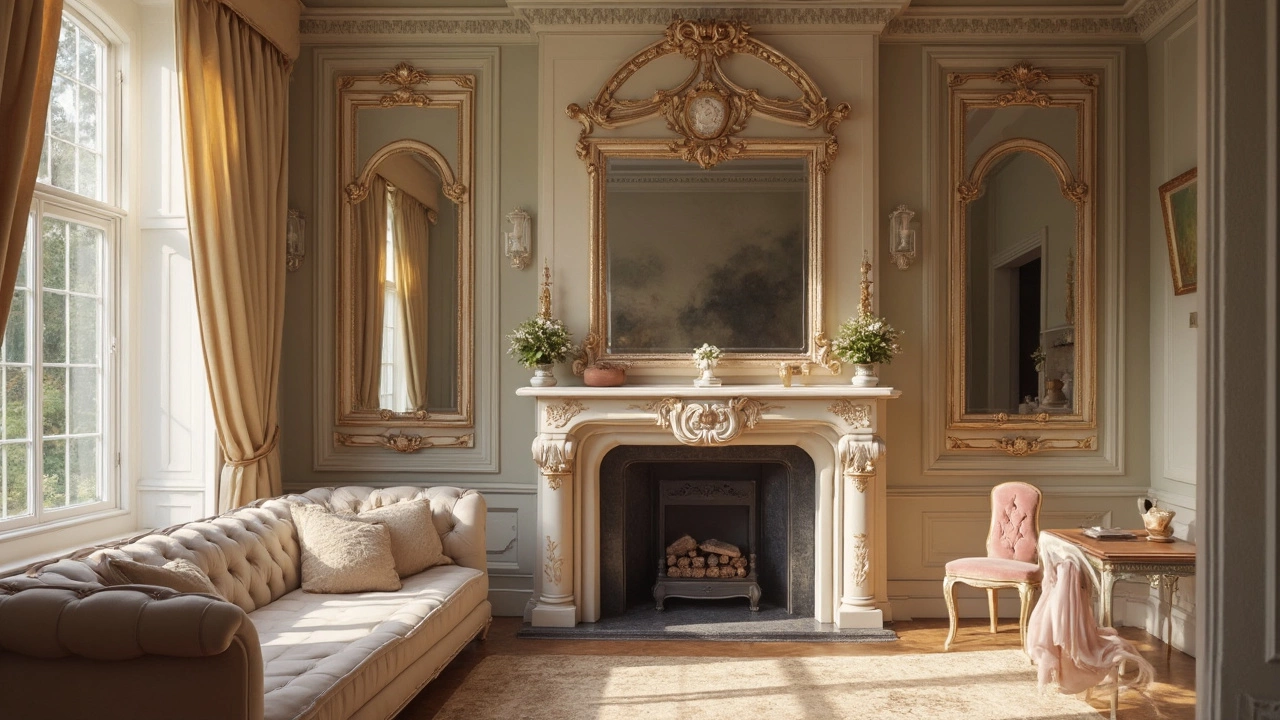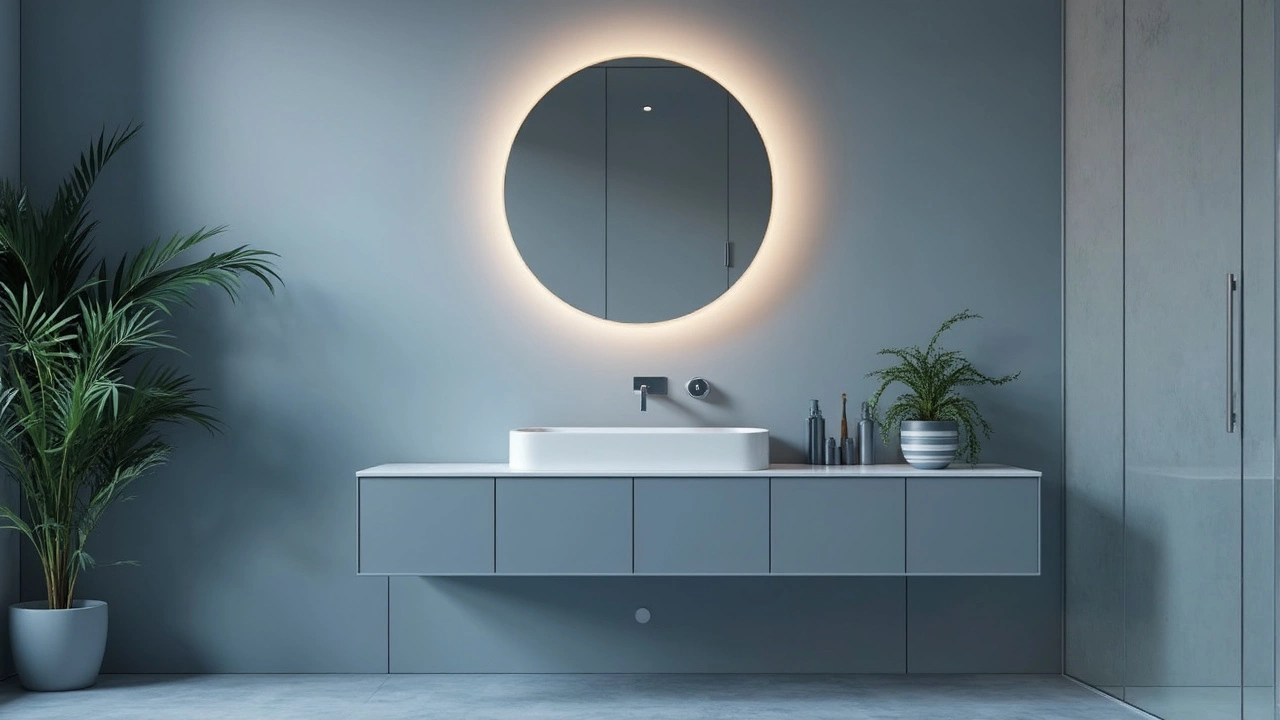Best Mirrors in the World: Who Actually Makes Them and Why It Matters
 Apr, 22 2025
Apr, 22 2025
Walk into any store, and mirrors look pretty much the same—shiny, flat, and ready to hang. But there’s a night-and-day difference between the cheap stuff and a truly great mirror. Ever noticed those funhouse vibes in a bargain mirror, or spotted weird cloudy patches that won’t wipe away? That’s what happens when you cut corners.
Good mirrors aren’t just about reflection—they’re about how clearly and evenly they bounce back light, how long they last, and how they make a room feel bigger and brighter. The best makers know their stuff down to the tiniest detail, from glass quality to the coatings on the back. People spend big money on furniture, but a bad mirror can throw off your whole look. The right one can make even a tiny bathroom feel upscale. So before you settle for what’s at your local store, let’s get real on which makers are worth your trust and money.
- What Sets a Great Mirror Apart
- Top Mirror Makers Around the World
- How to Spot Quality (and Avoid Junk)
- Choosing the Right Mirror for Your Space
What Sets a Great Mirror Apart
If you think all mirrors do the same job, you haven’t seen what a difference real quality makes. In the world of best mirrors, it’s the small stuff—the stuff you can’t always see right away—that changes everything. For starters, true clarity depends on the kind of glass used. Most cheap mirrors use soda-lime glass, which is fine for a quick fix, but high-end brands choose low-iron glass. Why does that matter? Low-iron keeps the reflection clearer and doesn’t have that greenish tint you notice along the edges.
Then there’s the coating. Top mirror manufacturers usually use a pure silver backing instead of aluminum. The difference? Silver offers a brighter, sharper reflection and lasts longer before the dreaded brown spots (you know, those cloudy blotches at the edges) show up. Some of the mirror brands even add a layer of copper and then a protective paint to help fight off humidity and oxidation—that’s why luxury mirrors don’t peel or stain.
- Flatness: A slight warp in cheap glass can make your face look odd or mess with the straight lines in your bathroom. The best mirror quality comes from glass that’s been polished and leveled way beyond the usual factory standards.
- Thickness: Thicker glass (think 5mm or more) means the mirror won’t flex or break as easily. Plus, it just feels more solid on the wall.
- Edgework: Ever run your finger along the edge and it’s sharp or wavy? High-end makers smooth and bevel the edges so they’re safe and look classy.
If you’re curious how this breaks down, here’s what goes into a top-tier mirror versus budget options:
| Feature | Bargain Mirror | Premium Mirror |
|---|---|---|
| Glass Type | Soda-lime | Low-iron |
| Thickness | 3-4mm | 5-6mm |
| Backing | Aluminum | Silver (with copper & paint layers) |
| Edge Finish | Raw or basic | Polished/beveled |
All these little upgrades really do add up. If you want a clear, crisp, and long-lasting reflection, don’t skimp. Whether it’s for your home gym or your hallway, the right specs mean you actually get what you pay for.
Top Mirror Makers Around the World
If you dig into who actually makes the best mirrors, a few names pop up again and again. It’s not just about fancy price tags or a slick website—these companies have been getting it done for years, sometimes for generations.
Let’s look at some standout mirror brands that are known worldwide for getting it right:
- Saint-Gobain (France): Started making glass way back in the 17th century and now runs massive mirror production for homes, cars, and just about everything in between. Their Miralite series is popular with folks who care about eco-friendly products.
- Guardian Glass (USA): You see their mirrors everywhere—from hotels to homes. They’re known for really solid coatings and clarity. They’ve got this thing called UltraMirror, which is less likely to get those gross black edges over time.
- Asahi Glass Co. (Japan): AGC is big in the glass world. Their mirrors are usually super flat, which means you don’t get that wavy, warped look. They focus a lot on high-end projects where every detail matters.
- Fenzi Group (Italy): They may not be a household name, but loads of top mirrors use Fenzi’s coatings. Their paints and sealants help keep mirrors from corroding—so you don’t end up with one that looks ruined after a few years in a steamy bathroom.
Funny thing: More than 70% of Europe’s mirror quality standards come straight from Saint-Gobain and AGC guidelines. There’s a kind of quiet competition between them to see who can set the bar for the whole industry.
Some brands target pure luxury. Catch names like Rimadesio (Italy) and Glas Italia—these guys treat mirrors like art pieces. Expect sticker shock, but the finish and custom options are on another level.
On the practical side, IKEA actually sources mirrors from reputable factories in Poland and China. You’re not getting the world’s best, but they stick to solid European standards for basic use. A little secret: Many high street brands just put their label on mass-produced mirrors, so that big price leap isn’t always about true quality.
If you’re picking out a mirror manufacturer for serious renovations—say, for a bathroom or wardrobe doors—asking if they use Saint-Gobain or AGC glass is a good tip-off that you’re on the right track. It’s the difference between “just a mirror” and something that actually lifts up your space for the long run.

How to Spot Quality (and Avoid Junk)
If you're shopping for the best mirrors, don’t just grab the first shiny thing you see. There’s more to a solid mirror than just its reflection. Poor quality mirrors show distortions, have weird tones, and rarely last long before they start to look rough.
Here’s how you can actually tell if you’re looking at a high-quality piece or a dud:
- Check the Glass – Good mirrors use thick, flat glass (usually 1/4 inch or about 6mm). Thin glass (think 1/8 inch or less) warps easily and will mess with your reflection.
- Look at the Backing – The reflective part is silver or aluminum layered on the back. Premium manufacturers like Saint-Gobain or Pilkington use high-grade silver, which holds up better over time. Cheap mirrors might cut corners with thinner coatings that flake or corrode.
- Check the Reflection – Stand at an angle. If your face looks wavy, you’re looking at junk. Quality mirrors don’t distort. Hold something with text in front—the text shouldn’t look stretched or weird.
- Edge Quality Matters – The best mirrors from top mirror brands are polished, sealed, or beveled at the edges. Raw edges can lead to faster oxidation and those ugly black spots you see on cheap mirrors.
- Look for Safety Backing – Especially for bathrooms or high-traffic spots, check for a film or coating that holds glass together if it breaks. It’s a feature you want if you have kids like mine running around the house.
Did you know corrosion is the #1 reason cheap mirrors get those black spots along the edges? Here’s a quick rundown of how long mirrors last depending on how they’re made:
| Mirror Type | Typical Lifespan |
|---|---|
| Top brands, silvered and sealed | 15–20 years+ |
| Mid-range, basic silver backing | 7–12 years |
| Low-end, thin glass/aluminum | 2–5 years |
You don’t need to be a pro to spot a good mirror manufacturer. Just remember: heavy and clear is better than light and dull, sealed edges always win, and if the reflection isn’t crisp, keep looking. Never settle for a cloudy look—quality doesn’t have to be a guessing game.
Choosing the Right Mirror for Your Space
Picking out a mirror might sound easy, but there’s a lot you need to think through if you want the best outcome. Your space, your style, and your needs all play a part. Let’s break it down so you get a mirror that actually works for you, not just one that looks cool in the store.
First up: size matters—a lot more than you’d think. For bathrooms, a good rule is to keep the width of your mirror about the same (or slightly smaller) as your vanity. In living rooms or bedrooms, a big mirror can open things up, but you need to leave enough wall space so it isn’t overwhelming. Full-length? Make sure you actually have the floor space so it isn’t blocking a door or outlet.
Shape and frame style are more than just looks. Frameless mirrors give a modern vibe, while chunky wooden or metal frames set a different tone. If your wall is colorful or busy, consider a simple frame. For boring walls, a bold mirror can become the focus. Think about what blends in—and what stands out—in your room.
The hanging method is huge for safety. Heavy mirrors (especially high-quality, full-length ones) should always go into studs—never just drywall. Seriously, nothing wrecks a Saturday like a shattered mirror on the floor. Get wall anchors if studs aren’t an option, and use the hardware included by the manufacturer. If it didn’t come with hardware, upgrade to pieces that can handle the weight.
Reflectivity is another thing most people overlook. The best mirror brands use higher-quality glass and thicker silver backing, so you get a sharper, brighter reflection. If you’re looking online, check for specs like glass thickness (4-6mm is standard for quality) and copper-free backing, which slows down those ugly edge spots from forming over time.
| Type of Space | Recommended Mirror Type | Mounting Tips |
|---|---|---|
| Bathroom | Frameless or simple framed, moisture-resistant | Use anchors or mount into studs |
| Entryway | Statement frame, larger size | Wall anchors, level placement |
| Bedroom | Full-length, solid frame | Securely fasten to wall or door |
| Living Room | Oversized, decorative | Check wall type before mounting |
One last tip: always measure your space, and double-check the mirror’s weight and size before you hit buy. The best mirror isn’t always the most expensive, but it should fit your space and lifestyle—and not become a maintenance headache down the road.